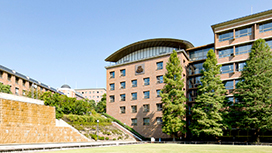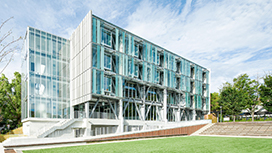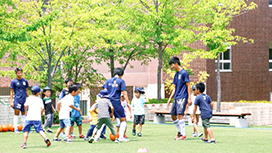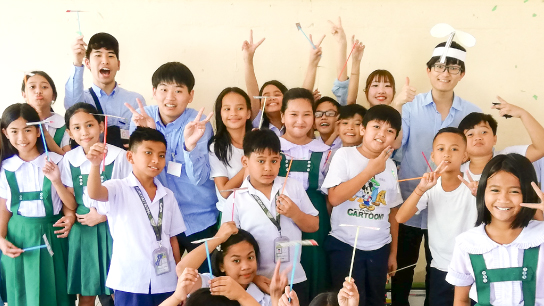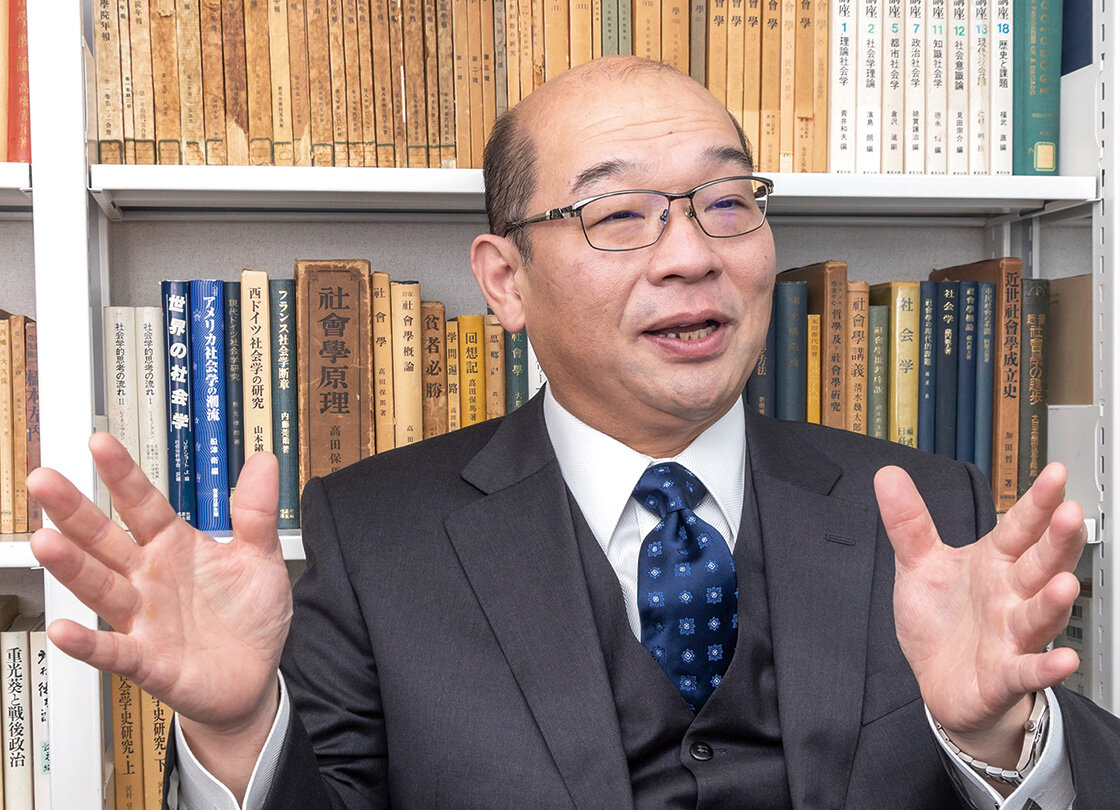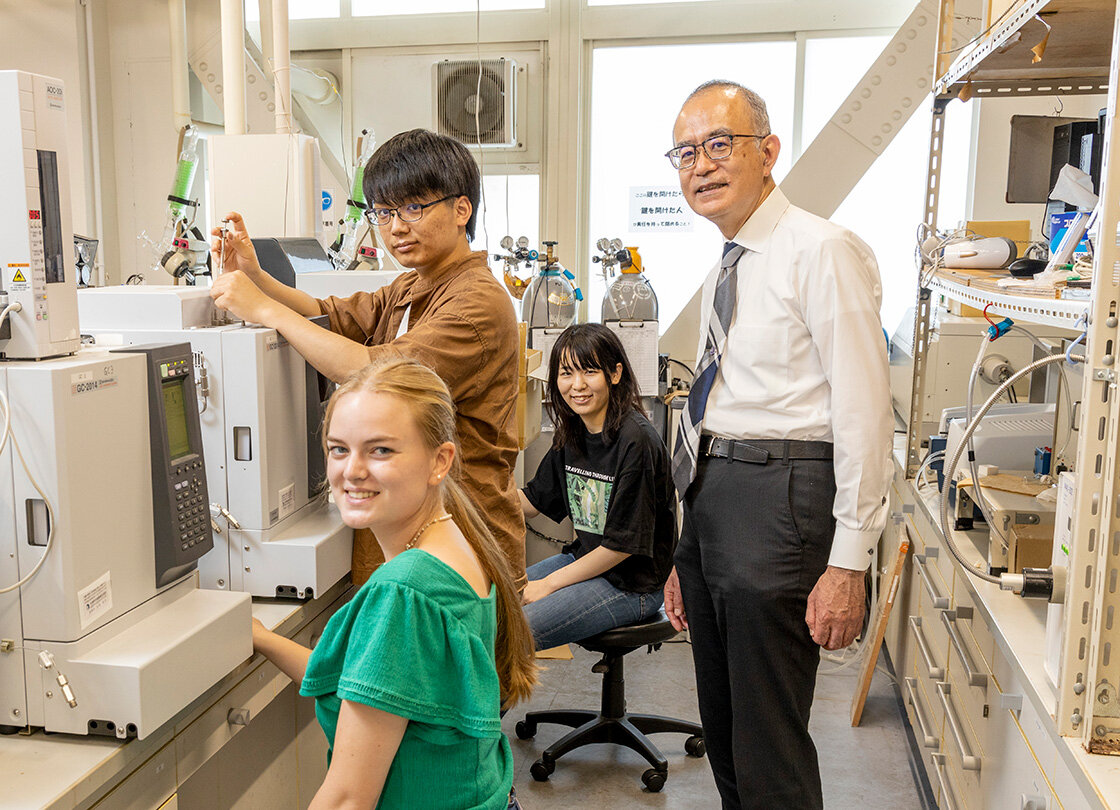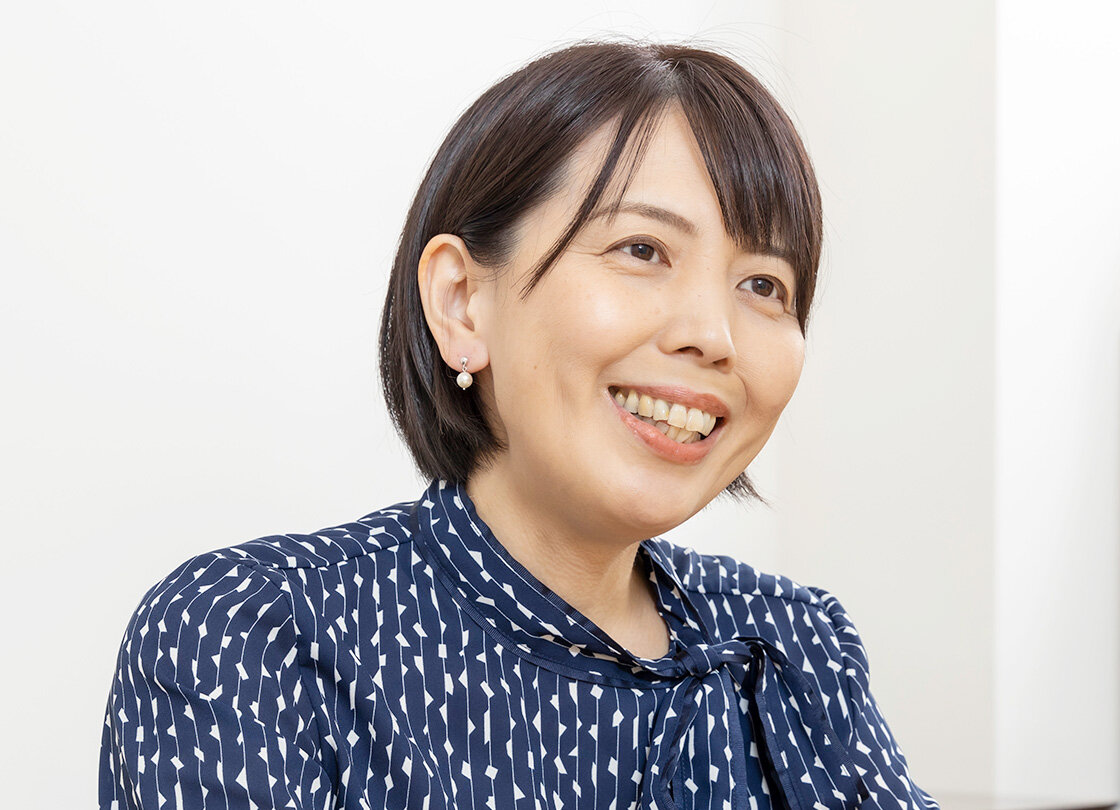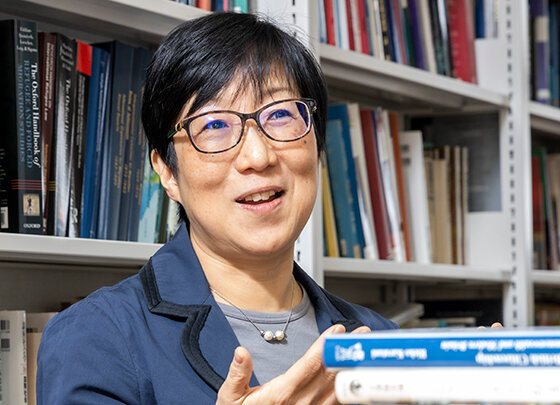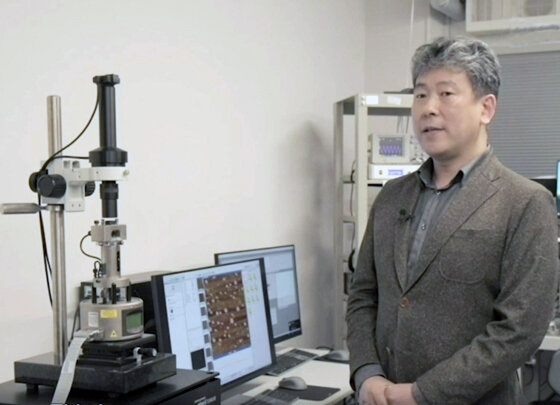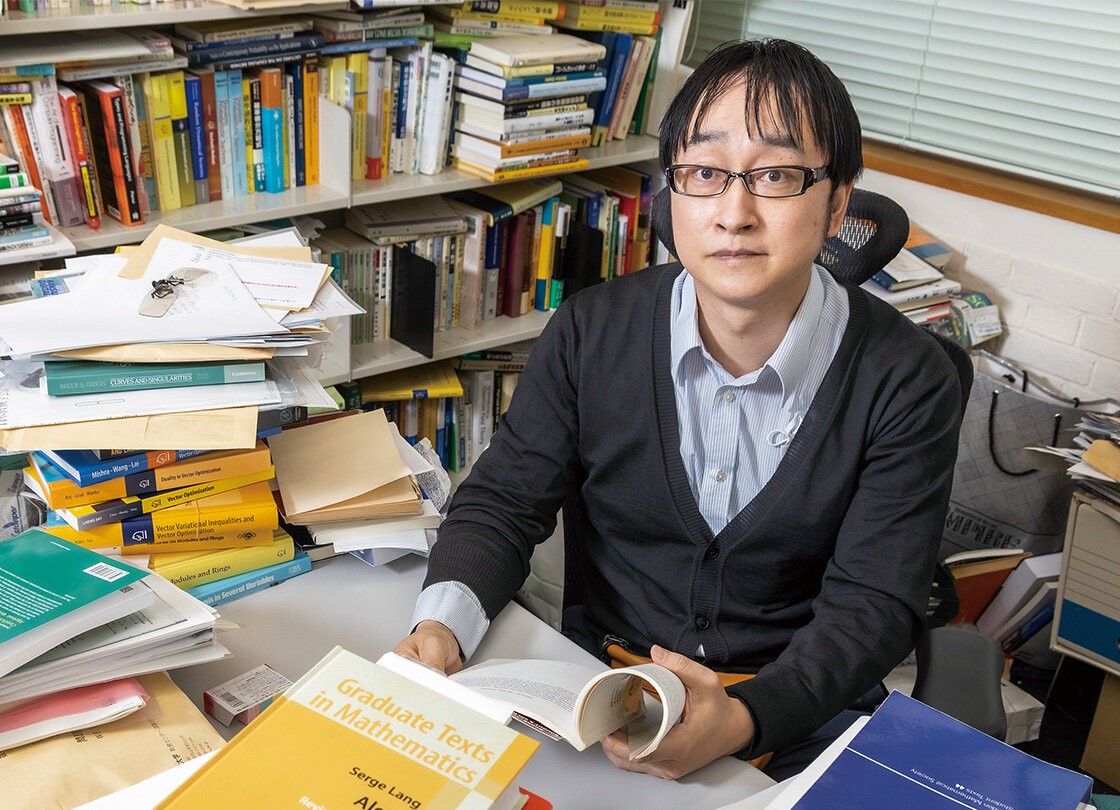KANDAI
HEADLINES
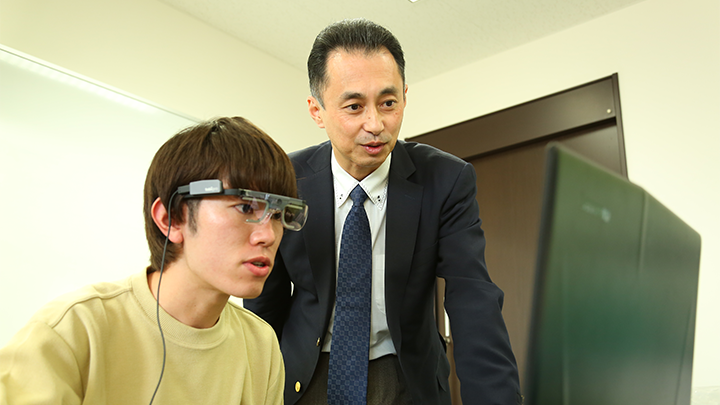
- RESEARCH
Deciphering unpredictable crowd movement to ensure the safety of pedestrians
Analyzing the mechanisms behind crowd disasters to consider the safe, smooth flow of people
/Toshihiro Kawaguchi, Professor of the Faculty of Societal Safety Sciences
At locations and events where people suddenly rush in a given direction, there is a constant danger of crowd disasters, including people falling over like dominoes or surging like an avalanche. Although crowd disasters have been a recurring problem around the world since ancient times, it remains difficult to accurately predict the locations of accidents or what triggers them. Professor Kawaguchi uses computer simulations, experiments, and observations to verify crowd disasters, for which it is generally difficult to reproduce the actual occurrence situation. He is using the power of reason to explore the unknown mechanism behind crowd disasters as he continues to search for ways to help prevent these accidents.
Utilizing dynamics models of rocks and particles to construct basic equations expressing the flow of people
In July of 2001, at a fireworks show held on the Okura Beach in Akashi, Hyogo Prefecture, people who were going there and returning home crowded on a pedestrian bridge, resulting in a disaster that cost many people their lives. Overseas as well, there is an annual Islam event that always causes a crowd accident of hundreds of people. Furthermore, even though the bottleneck points at the event site have been improved, another accident there recently claimed around 2,000 lives. Crowd disasters are caused by a series of complex and incidental intertwined factors, and no reliable measures to prevent them have yet been established.
Professor Kawaguchi ─ who was learning mechanical engineering and was involved in researching particle movement at the time ─ started researching crowd safety science as a result of a request to analyze the movement of closely packed people by applying a simulation of the situation of flowing particles in contact with each other.
Although there are basic equations that express the movement of solid particles, air, and water, there are still no basic equations that express the movement of complex people. "Rocks and particles move as a result of external forces, but people make their own judgments depending on the situation and change their movement. Unless we apply such judgments and thinking to the equations, it will not be possible to express the movement of people." Since he started this research, Professor Kawaguchi has been seeking the essential parameters that bring about a causal relationship between applied force and the resulting movement while verifying various cases in an effort to build a simulation model that shows the movement of crowds from scratch. For example, while simulating the Akashi pedestrian bridge accident, he created an equation model for which the fact that a lot of people turn sharply at corners to try to take the shortest route was considered, reproduced the accident, and found that ─ as was the case in reality ─ a lot of people got hurt at corners.
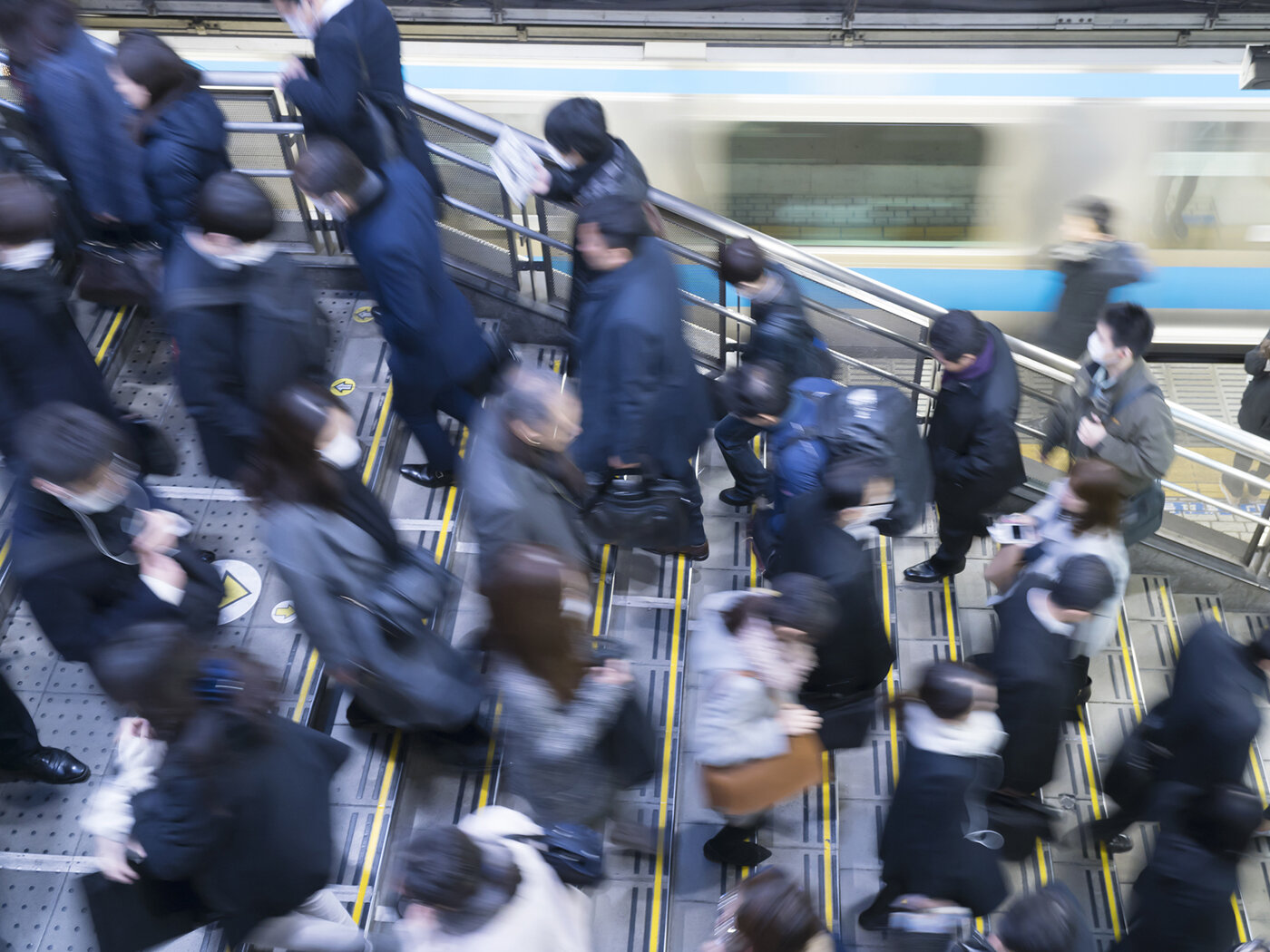
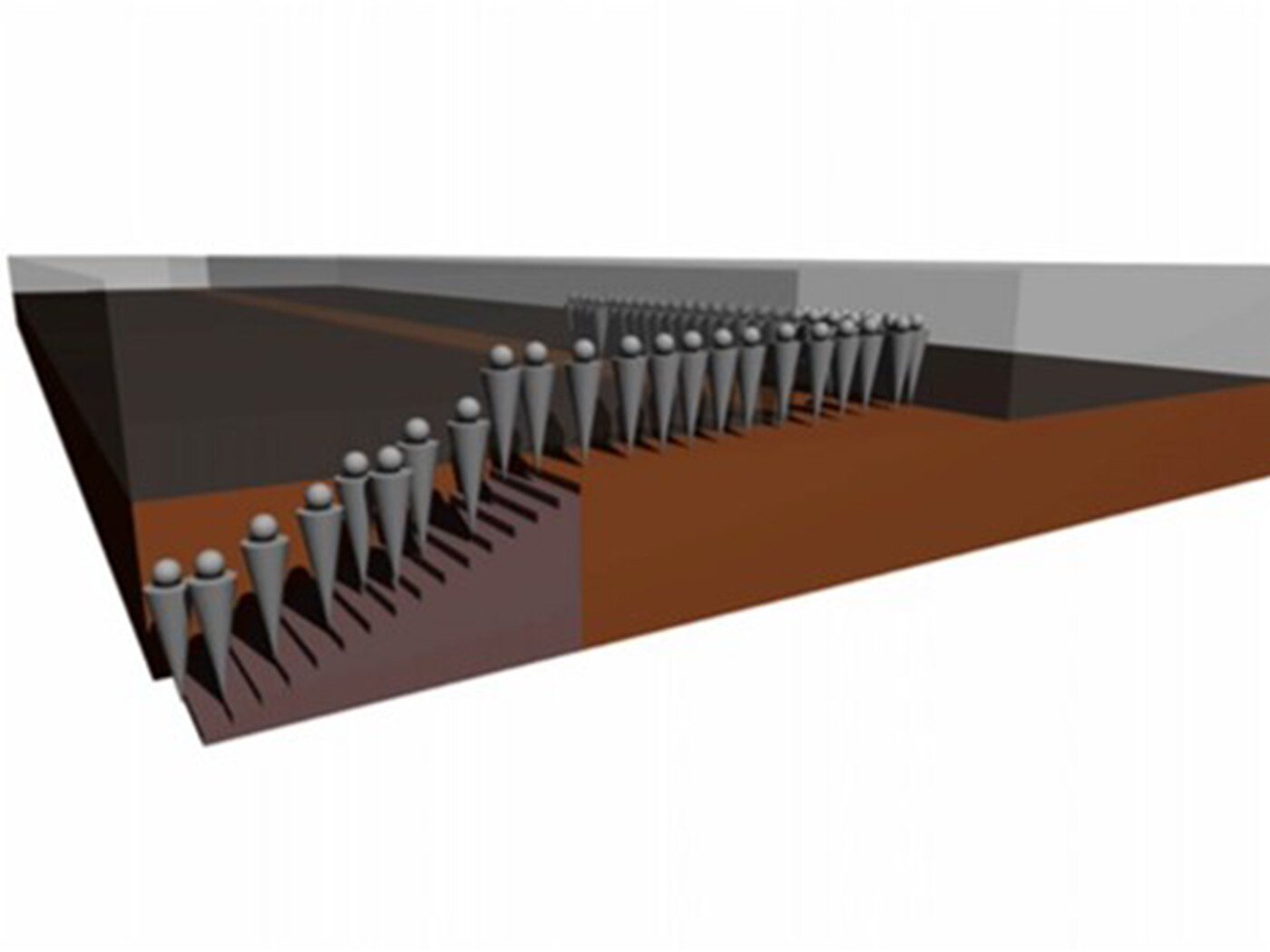
Joint research with a railway company. Aiming to achieve more realistic reproduction through simulations and experiments
Reproducing and analyzing actual accidents is extremely difficult and even dangerous in some cases. Therefore, at Professor Kawaguchi's laboratory, research is conducted through a mix of simulations and experiments using experimental equipment. The laboratory equipment is used to conduct experiments related to the force, repulsive force, degree of bodily deformation, and other forces acting on each person, and then the resulting analysis data is applied to the simulation model. This makes it possible to quantitatively calculate the forces applied in the event of crowding, which enables the reproduction of crowd movement that is closer to reality.
Professor Kawaguchi's laboratory is currently engaged in joint research with the Research Institute, Kintetsu Railway Co., Ltd., including the analysis of ticket gate data for Abenobashi Station, the company's most crowded facility. The organizations are using a simulation model to verify the optimal ticket gate placement and operational times to break up the congestion at 16 ticket gates and ensure the smooth flow of people. In addition, the organizations are considering the use of smartphones while walking, for which there are concerns regarding the danger of collisions or falling down stairs or off of platforms. There has even been a unique proposal regarding how to reduce accidents: creating a special lane for using a smartphone while walking and having station employees guide people to them. The organizations are also working on research related to straps. They have experimentally verified the amount of weight a person can bear without letting go of the strap in cases where a neighboring passenger leans against them when the train suddenly stops. By using a model created based on this number and conducting simulations for which straps are placed at different positions, the organizations are continuing to collaborate to ensure the safety of passengers.
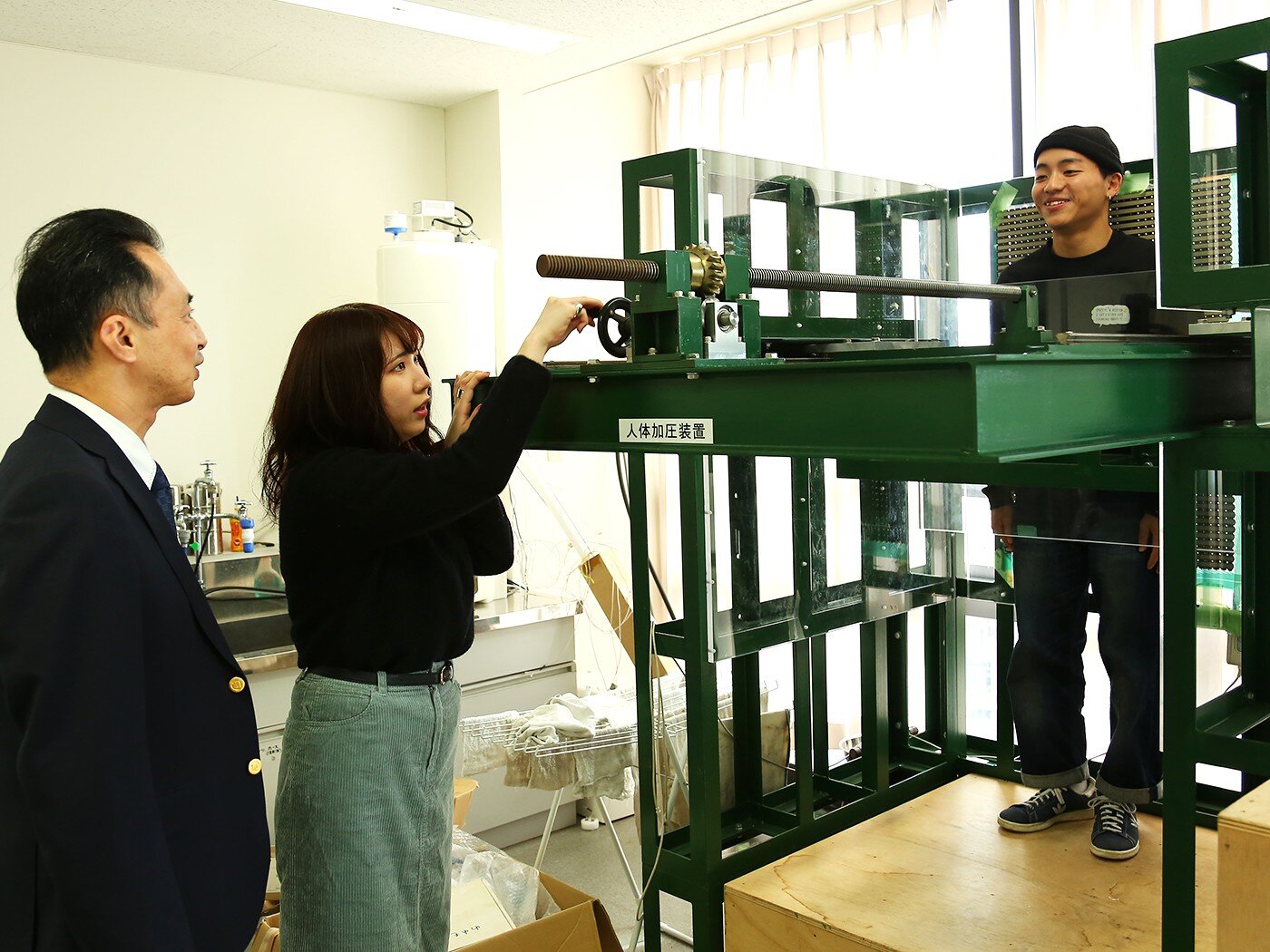
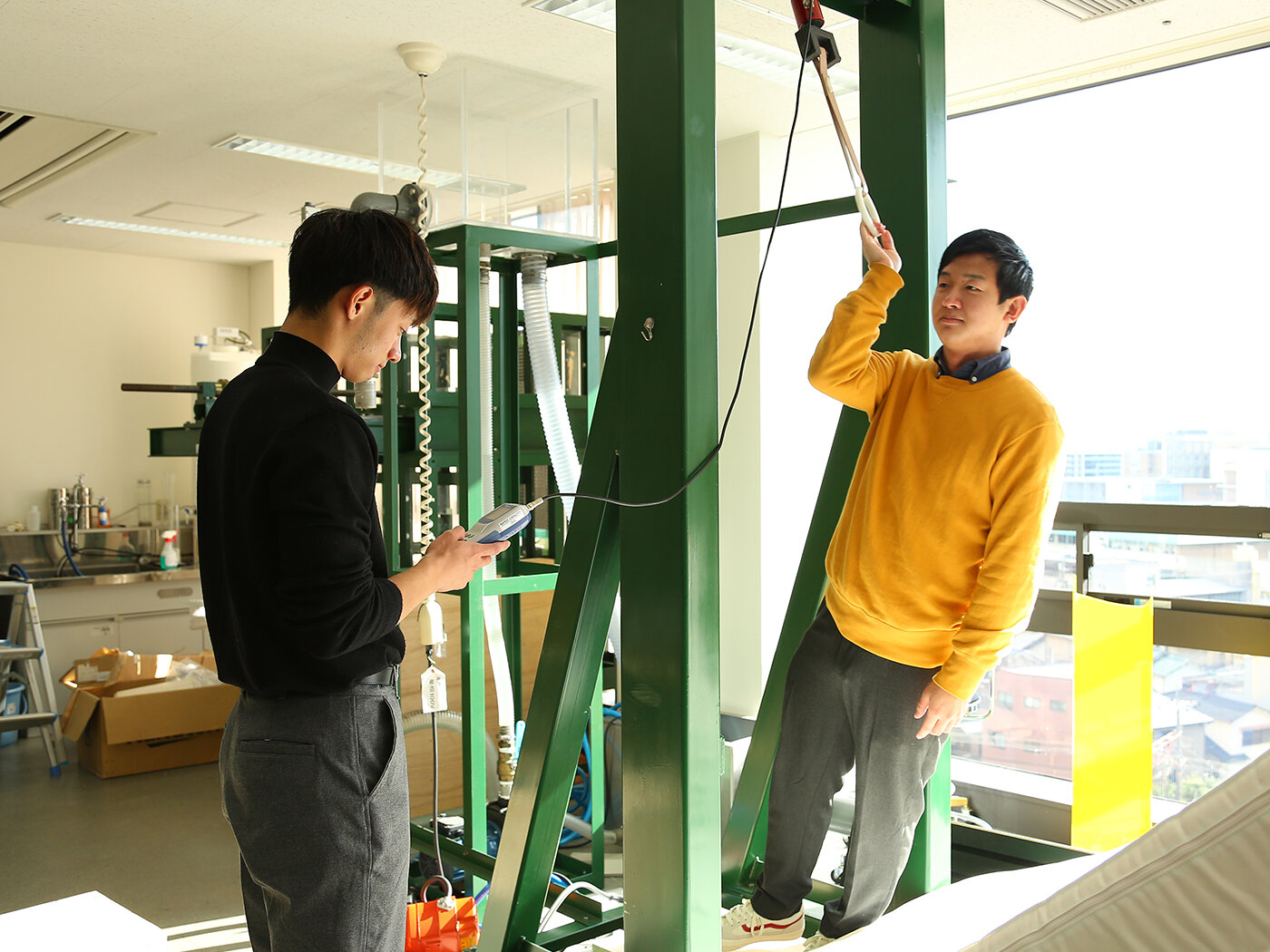
Researching everything relevant to helping ensure the safe movement of pedestrians
Professor Kawaguchi believes that crowd safety science is not necessarily related only to crowded locations but also encompasses all other themes associated with the safe movement of pedestrians. He is currently researching the visibility of signs with students at his laboratory. More specifically, he has displayed emergency exit signs on monitors using various colors instead of green ─ the color that is normally used ─ and used an eye tracker to see which color people looked at first and where they looked the longest. As a result, he learned that the position of such signs is more relevant than their color.
In addition, to help respond to COVID-19, the professor is verifying traffic approaches that reduce the number of times shoppers at supermarkets meet face-to-face. To achieve this, he measured the total amount of time people spend face-to-face when moving clockwise or counter-clockwise through an in-store aisle set up by him. "One-way traffic reduces the chances for face-to-face meetings and is safer, but we also found that ─ if just ten percent of people go the wrong way ─ the number of face-to-face meetings increases considerably. Therefore, if a one-way traffic rule is created, thorough compliance is necessary."
When Professor Kawaguchi photographed the flow of pedestrians in downtown Osaka from above, he noticed that more people walked on the left side. As a result, he theorized that, when people approach each other, they tend to dodge to the left. "If I can collect more data and come up with the principle that, for example, six out of every ten people dodge to the left and then apply this to a simulation model, it will likely result in much more realistic reproducibility. I believe such a model could be used for more effective pedestrian zone and city design, such as by placing stairs in stations on the left to facilitate smoother evacuations."

The Olympics and expos. New crowd safety science aimed at preparing for global crowds
To further explore crowd safety science, knowledge of various fields, including not only mob psychology but also economics and laws, is necessary. Professor Kawaguchi feels that the extremely diverse environment of the Faculty of Societal Safety Sciences is useful for research. "Our faculty fuses the arts and sciences, so you can hear from experts in various fields whenever you want. Students can also easily ask the instructors of other seminars questions, and there is little distance between teachers and students, which makes for a pretty open environment." Kansai University also has a well-developed system for encouraging research, which helps increase the motivation to take on the challenge of new research.
Professor Kawaguchi also points out that crowd disasters are closely related to national traits. Japanese people are relatively likely to follow rules, and many of them behave calmly, so there are not that many accidents compared to various foreign countries. In contrast, there are frequent cases of crowd accident of overseas soccer spectators when they get excited. "In situations where people from around the world gather, such as the Olympics and expos, conventional common sense and models no longer apply. Therefore, we need a simulation model that can represent new types of global crowds. My approach is to use particles that represent people and then mix in a certain percentage that have, as an example, aggressive personalities." When a certain number of people cut into the flow of people moving toward an exit in an orderly fashion, what kinds of accidents are likely to occur? The importance of crowd safety science ─ which reflects the times and society ─ is increasing more and more.
Related articles
- TOP
- About Kansai University
- Public Relations
- List of Headlines
- Headline Article

